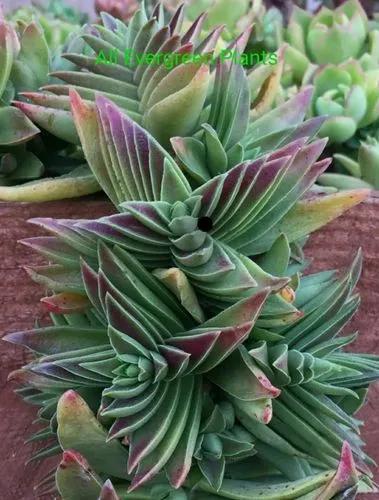This adorable succulent with a red hue at the tips is easy to grow and care for. Jelly Beans is a perfect plant for aspiring gardeners.
Jelly-Beans Care
Sedum rubrotinctum
Other names: Sedum Jelly Bean, Pork And Beans



Sedum rubrotinctum, also known as Jelly Beans, Pork and Bean, or Christmas Cheer, comes from Mexico. We identify this plant as a succulent with loose leaves that resemble jelly beans. It is usually wholly green, but bright sunlight gives the tips of the leaves a reddish tint.
Sedum rubrotinctum looks beautiful as a separate plant or as a part of a composition.
How to Care for the Plant

Water

Do not let Jelly Beans sit in wet soil for long periods. Avoid abundant watering. Wait for the soil to dry completely before taking the watering can again.

Pruning

Sedum rubrotinctum does not need pruning for better growth. However, you can do this to form a lovely bush or to propagate the plant.

Fertilizer

The plant does not need abundant feeding. One time per month will be enough. Use a low-nitrogen fertilizer or special products for succulents.

Sunlight

Like most succulents, Sedum rubrotinctum likes bright sunlight. You should place the plant on the windowsill to preserve the attractive reddish tint on the tips of the leaves. However, if your windows face south, move the succulent to partial shade in the summer to avoid burns from the active sun.

Soil

The soil for Sedum rubrotinctum should be well-draining. Use a sandy mix or a special mix for cacti and succulents.

Propagation

You can quickly propagate Jelly Beans by leaf or stem cutting. The plant can also propagate independently. However, the easiest way is through stem cutting. Break off or cut the stem and immerse it in fungicide. After that, put future plants in moist soil for succulents. Roots will appear after a couple of weeks.

Temperature

The best temperature for Jelly Beans is 65-80°F (18-27°C). You can grow the plant outside. However, you should bring it indoors when temperatures drop below 50°F (10°C) at night.

Container

Choose a pot that is slightly larger than the root system. Do not focus on the stems because they are much larger and broader than the roots. The container can be made of any material but must have a drainage hole.

Fun fact

Although the plant resembles sweets, it is better not to try to taste it because it is poisonous to animals and people.

Popularity

6,565 people already have this plant 1,773 people have added this plant to their wishlists
Discover more plants with the list below
Popular articles






